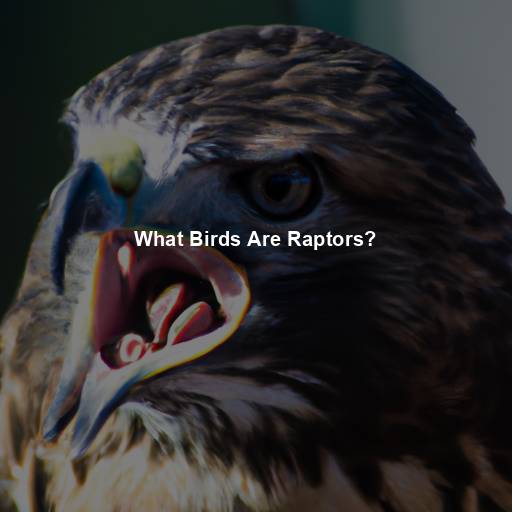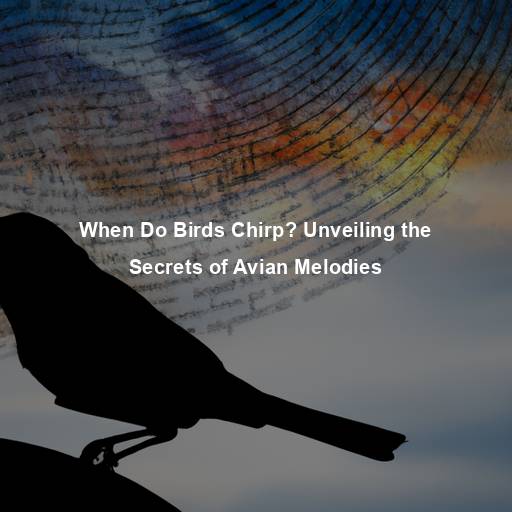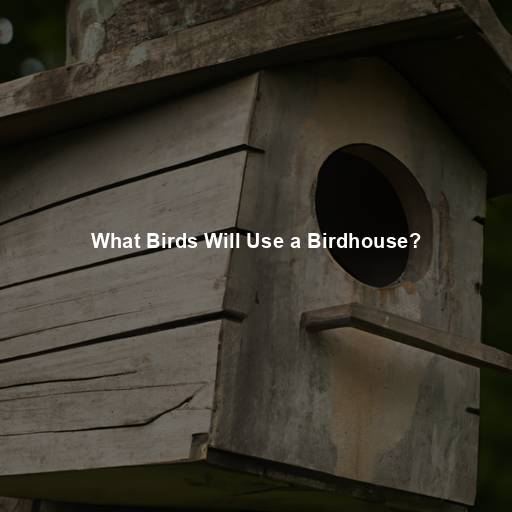The Enigma of Blue Birds: Unraveling the Mystery Behind Their Color
Last Updated on July 13, 2023 by Evan
Contents [hide]
- 1 Unveiling the Allure of Blue Birds
- 2 Understanding Avian Feather Pigmentation
- 3 The Role of Melanin in Blue Feathers
- 4 The Impact of Feather Structure on Blue Coloration
- 5 Evolutionary Significance of Blue Plumage
- 6 The Intricacies of Blue Pigments: Carotenoids
- 7 The Genetics Behind Blue Feathers
- 8 Preserving the Splendor of Blue Birds
- 9 The Influence of Structural Arrangement on Blue Coloration
- 10 The Intricacies of Melanin in Blue Feather Production
- 11 The Interplay Between Pigments and Structural Coloration
- 12 The Enduring Beauty of Blue Birds
- 13 FAQs – How are birds blue?
- 13.1 ### Why are some birds blue?
- 13.2 ### Are all blue feathers the same?
- 13.3 ### Can birds change the color of their feathers?
- 13.4 ### Do all birds have blue feathers?
- 13.5 ### Are birds born with blue feathers or do they develop later?
- 13.6 ### Can blue feathers serve any specific purpose for birds?
Unveiling the Allure of Blue Birds
Blue birds have captivated our imagination for centuries, their vibrant hues painting the skies with a touch of enchantment. But have you ever wondered how these feathered creatures acquire their stunning blue coloration? In this article, we will embark on a fascinating journey to unravel the mystery behind the captivating blue shade that adorns the wings of certain avian species.
Understanding Avian Feather Pigmentation
When it comes to birds, feathers are truly a marvel of nature, serving multiple purposes such as helping them fly, keeping them warm, and even attracting potential mates. But what makes feathers even more fascinating is the incredible range of colors they come in. The coloration of bird feathers can be attributed to two fascinating mechanisms: structural coloration and pigmented coloration. These mechanisms are what give feathers their mesmerizing shades and patterns, leaving us in awe of their beauty and diversity.
Structural Coloration: The Key to Blue Feathers
Have you ever wondered how birds achieve their vibrant, eye-catching colors? It turns out that it’s not just about the pigments. Structural coloration is the secret behind the stunning blues you see in feathers. Instead of relying on dyes, birds have evolved intricate physical structures in their feathers that scatter light in just the right way to create these mesmerizing hues.
Pigmented Coloration: The Lesser-Known Factor
The vibrant blue feathers of birds have long fascinated scientists and bird enthusiasts alike. It turns out that there’s a complex interplay of factors responsible for this mesmerizing coloration. While pigments like melanin and carotenoids are crucial in adding shades to the plumage, they can’t take all the credit for the stunning blue hue. Structural coloration, with its intricate patterns and light manipulation, joins forces with pigmented coloration, creating a captivating visual feast for our eyes.
The Role of Melanin in Blue Feathers
Feathers, those magnificent creations that embellish our avian friends, hold within them a hidden secret, a dance of colors orchestrated by the enigma of melanin. Varying shades and hues come to life through the intricate interplay between this pigment and the whimsical light that bathes our world. Though melanin alone is not the sole artist of the vibrant blues we so admire, its partnership with light creates a captivating spectacle. Within the delicate structure of feather barbs, melanin particles seize certain wavelengths of light, permitting only a majestic array of colors to be reflected.
The Impact of Feather Structure on Blue Coloration
Feathers, those intricate marvels of nature, hold within them the enigmatic secret to the mesmerizing range of blues gracing the avian world. It’s as if a symphony of factors converge to create this visual feast for the eyes. The positioning of melanin particles, the dimensions of their granules, and the delicate spacing between feather barbs all play a part in this chromatic ballet. It’s fascinating how the tiniest adjustments in these intricate elements can orchestrate a cacophony of blues, from the soft whisper of a clear sky to the profound depths of an indigo abyss.
Evolutionary Significance of Blue Plumage
Birds have long been captivating creatures, and one of the most intriguing aspects of their existence is the development of their beautiful blue feathers. The intricate process behind this evolution is a fascinating blend of natural and sexual selection. It’s truly remarkable how the ability to flaunt vibrant blue plumage has become a pivotal element in their elaborate courtship dances, both mesmerizing potential mates and providing a glimpse into their genetic prowess. The intensity and brilliance of these blue hues serve as captivating indicators of the bird’s well-being, genetic excellence, and remarkable knack for securing vital resources.
The Intricacies of Blue Pigments: Carotenoids
While structural coloration and melanin often take center stage in discussions about blue feathers, carotenoids also play a role in shaping avian plumage. Carotenoids are organic pigments obtained through the diet of birds, primarily from fruits and insects. However, their influence on blue coloration is indirect, as they contribute to the overall health and condition of the bird, which in turn affects the expression of blue hues.
The Genetics Behind Blue Feathers
The spellbinding allure of the exquisite blue hues flaunted by some winged beauties is a tale woven not just by external whims. Oh no, my friend, genetics too has its hand in this mesmerizing display. Hidden within the strands of DNA lies the key to these fascinating plumages, dictating the production and positioning of melanin, the intricate arrangement of feather barbs, and even the deposition of precious carotenoids. It is an ongoing saga of scientific inquiry, a captivating journey through the intricate tapestry of avian allure, uncovering the enigmatic secrets that lie beneath their breathtaking beauty.
Preserving the Splendor of Blue Birds
The allure of blue feathers beckons us to unravel their mysterious enigma, provoking a sense of awe and wonder. Behind this mesmerizing beauty lies a pressing need to safeguard the precious habitats that nurture these majestic creatures. Threatened by the destructive forces of habitat loss, pollution, and the ever-looming specter of climate change, birds worldwide teeter on the brink of perplexity. It is within our power, through collective support and unwavering conservation efforts, to preserve these ethereal marvels, allowing generations to come to revel in their celestial flights across the heavens.
Blue birds have long fascinated scientists and bird enthusiasts alike with their mesmerizing plumage. The vibrant shades of blue that adorn their feathers are not merely a result of pigments, but rather a complex interplay of various factors. Structural coloration, pigmented coloration, melanin, and genetics all contribute to the formation of these breathtaking hues. As we delve deeper into the scientific intricacies of blue feather perception, we are left in awe of the beauty and mystery that nature beholds.
The lure of blue feathers beckons us into a captivating journey through the enigmatic realm of light and color. As sunlight or artificial beams dance upon the intricate canvas of bird feathers, an enchanting spectacle of light scattering unveils itself. This mesmerizing process bestows upon us the privilege of witnessing a cosmic game of reflection and diffusion, as certain wavelengths are embraced while others are tossed aside. It is within this ethereal ballet that the secret of blue feathers lies, where a delicate arrangement of structures conspires to scatter the passionate hues of the blues and violets, leaving us bewildered in the wake of their resplendent beauty.
The Tyndall Effect: Creating Blue Skies and Blue Feathers
The Tyndall effect, named after its discoverer John Tyndall, provides key insights into the science behind the blue coloration of both the sky and certain avian species. This phenomenon occurs when tiny particles or structures in a medium scatter light in a specific direction, resulting in a blue appearance. In the case of blue feathers, microscopic structures within the feathers act as scattering agents, causing the shorter blue wavelengths to scatter and create the enchanting blue color.
Angle-Dependent Color Reflection
The angle at which light strikes and interacts with bird feathers also influences the perception of their blue coloration. Due to the unique structural arrangements in their feathers, the intensity and shade of blue can vary depending on the viewing angle. This angle-dependent color reflection adds a dynamic element to the beauty of blue birds, as their feathers can appear differently when observed from various positions.
The Influence of Structural Arrangement on Blue Coloration
Within the realm of structural coloration, the arrangement of microscopic structures within the feathers plays a pivotal role in determining the specific shade and intensity of blue. Various factors contribute to this arrangement, including the spacing between feather barbs, the presence of air pockets, and the shape and size of the microscopic structures themselves.
Barb Spacing: A Blueprint for Blue
The spacing between feather barbs influences the interference and scattering of light, thereby affecting the appearance of blue feathers. When the spacing is optimal, it allows for constructive interference, enhancing the blue wavelengths and intensifying the color. However, slight alterations in barb spacing can lead to variations in the perceived blue hue, ranging from a vibrant sky blue to a more muted tone.
Air Pockets: Enhancing the Blue Brilliance
Have you ever wondered why the feathers of certain birds shimmer with an intensity that seems otherworldly? It turns out that the secret lies within the microscopic structures nestled within those delicate plumes. These structures hold a hidden network of tiny air pockets that scatter and manipulate light in fascinating ways. It’s these very air pockets that give rise to the mesmerizing blue hues that captivate our gaze, making the feathers appear as vibrant and brilliant as a rare celestial gem.
Microscopic Structures: The Architects of Blue
Microscopic structures, such as feather barbules and melanosomes, play a crucial role in the creation of blue feathers. These structures are meticulously arranged, allowing for the manipulation of light and the production of the desired blue color. The size, shape, and composition of these structures influence the scattering and absorption of specific wavelengths, ultimately giving rise to the stunning blue hues observed in certain avian species.
The Intricacies of Melanin in Blue Feather Production
Melanin, a pigment commonly associated with brown and black feather coloration, also contributes to the development of blue feathers. However, its role in blue coloration is not as straightforward as one might assume. Melanin particles within the feathers have a unique arrangement that selectively absorbs non-blue wavelengths of light, allowing the blue wavelengths to be reflected and perceived by our eyes.
Selective Absorption: A Melanin Masterpiece
Have you ever wondered why some birds have such mesmerizing blue feathers? It turns out that the secret lies in the magical world of melanin particles. These tiny particles possess the power of selective absorption, which means they can choose which wavelengths of light to gobble up and which ones to let bounce off. When it comes to blue feathers, the melanin particles play an intricate game of hide-and-seek.
Genetic Factors: Unraveling the Melanin Mystery
The vibrant blue hues seen in bird feathers are the result of an intricate dance between genes and their expression. Melanin, the key player in this grand performance, is not only synthesized but also meticulously placed within the feathers. The intricate variations in specific genes responsible for this process can rearrange the melanin particles, like a maestro directing a symphony, creating a stunning array of blues in avian plumage that leave us in awe. Understanding this complex interplay of genes and pigments adds a new layer of enchantment to the mesmerizing world of bird colors.
The Interplay Between Pigments and Structural Coloration
The mesmerizing blue hues of feathers are not just a result of structural coloration and melanin, but also the enigmatic influence of pigments like carotenoids. These mysterious compounds, acquired through the avian diet, have an indirect impact on feather health and condition, ultimately influencing the manifestation of those captivating blue shades. The intricate relationship between dietary carotenoids and the intricate world of avian coloration continues to puzzle scientists and delight bird enthusiasts alike.
Carotenoids: Nourishing Blue Feathers
Carotenoids are organic pigments found in various fruits, vegetables, and insects that birds consume. Although carotenoids themselves do not directly produce blue coloration, they contribute to the overall health and condition of the bird, which can impact the expression of blue hues. By enhancing feather quality and strengthening the immune system, carotenoids indirectly support the development of vibrant and lustrous blue feathers.
The Enduring Beauty of Blue Birds
Throughout the ages, humans have been entranced by the enigmatic allure of avian species bedecked in an ethereal shade of blue. The elusive secret behind their mesmerizing spectacles of color has captivated researchers and aficionados alike, delving deep into the obscure realms of scientific inquiry. It is in this captivating exploration that the intricate tapestry of their vivid plumage unravels, revealing a delicate dance woven by the intricate threads of structural coloration, pigmented wonders, the enigmatic hue of melanin, the complex interplay of genetics, and the enigmatic symphony conducted by the ever-shifting forces of the environment.
By delving into the enigma of blue feathers, we gain a deeper appreciation for the wonders of nature and the remarkable adaptations that birds have evolved. Let us cherish and protect these avian marvels, ensuring that future generations can continue to revel in the splendor of blue birds gracing our skies with their ethereal beauty.
FAQs – How are birds blue?
### Why are some birds blue?
Birds are truly fascinating creatures, especially when it comes to the mesmerizing shade of blue that graces their feathers. These enchanting hues are not simply the product of pigmentation, oh no – they are a result of a remarkable phenomenon known as structural coloration. Unlike other colors, blue feathers lack pigments but instead possess microscopic structures that play a game of light scattering. As a result, blue wavelengths bounce off these structures, creating a breathtaking display that leaves us in awe of nature’s artistry.
### Are all blue feathers the same?
No, not all blue feathers are the same. The shade and intensity of blue in bird feathers can vary significantly among species and individuals. The specific arrangement and properties of the microscopic structures within the feathers contribute to these differences in color appearance. Additionally, variations in the pigments present in the feathers can influence the final blue shade. Some birds may even have feathers that display iridescence, appearing to change color depending on the angle of light falling on them.
### Can birds change the color of their feathers?
Have you ever wondered why birds rock those vivid blue feathers? It’s not because they have a secret color-changing power, like a stealthy chameleon. No, my friend, the truth is even more intriguing than that. The stunning blue hues of bird feathers are actually a clever result of their physical structure, a delicate dance of light and beauty. But hold on, because this color extravaganza is not entirely under their control. Environmental conditions, diet, and overall health can impact the intensity of their vibrant plumage. So, next time you admire a blue-feathered wonder, remember that nature’s palette is as complex and enigmatic as a captivating puzzle.
### Do all birds have blue feathers?
Contrary to popular belief, not every feathered creature boasts a brilliant blue hue. The avian world is a colorful canvas, intricately woven with boundless variations. While Blue Jays, Bluebirds, Kingfishers, and Peacocks are celebrated for their resplendent sapphire plumes, the avian realm encompasses an extraordinary spectrum of pigments. From earthy browns to vibrant greens, fiery reds to sunny yellows, and mysterious blacks, the dazzling array of colors serves multifarious purposes, from blending into surroundings to captivating potential partners or asserting dominance. The mesmerizing tapestry of avian beauty never fails to enthrall and perplex.
### Are birds born with blue feathers or do they develop later?
Did you know that birds undergo a captivating transformation when it comes to their feathers? Contrary to popular belief, those vibrant blue plumage that we often associate with certain species don’t magically appear at birth. Instead, baby birds sport a cozy downy covering that serves as their thermal guardian. As they mature, these downy feathers give way to their adult counterparts, revealing the stunning patterns and hues imprinted in their genetic code. So, if you ever wondered how those majestic blue feathers come to be, it’s all part of the mesmerizing molting process that unfolds as these avian wonders venture into adulthood.
### Can blue feathers serve any specific purpose for birds?
Blue feathers in birds can serve various purposes. One of the main functions is sexual selection, as blue coloration is often associated with attracting mates. In many bird species, males display more vibrant and intense blue feathers, using them as visual signals to females during courtship displays. The blue color can represent health, genetic quality, and the ability to acquire necessary resources for survival. Additionally, blue feathers can also provide camouflage in certain habitats, like dense foliage or bodies of water where the blue color helps birds blend in with their surroundings.







